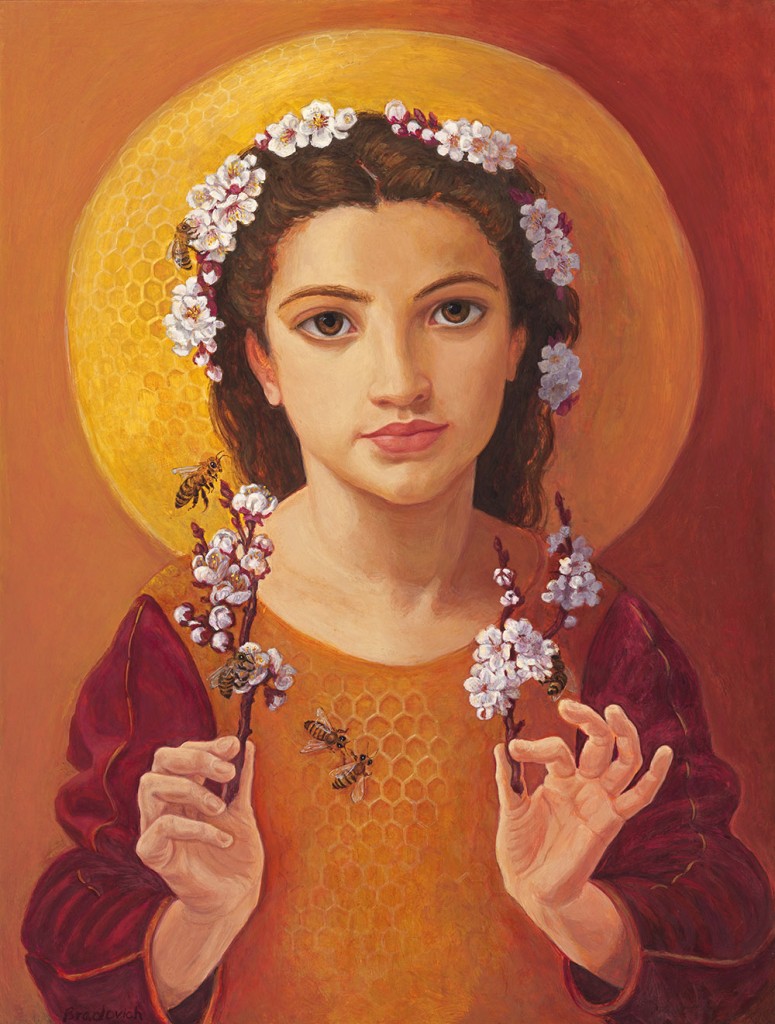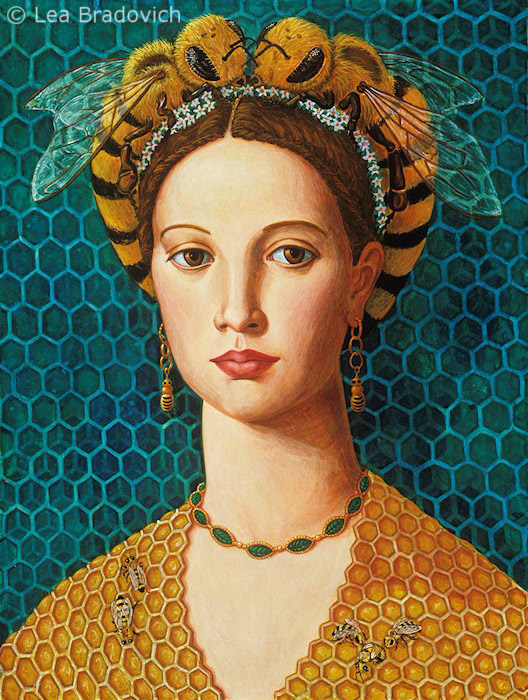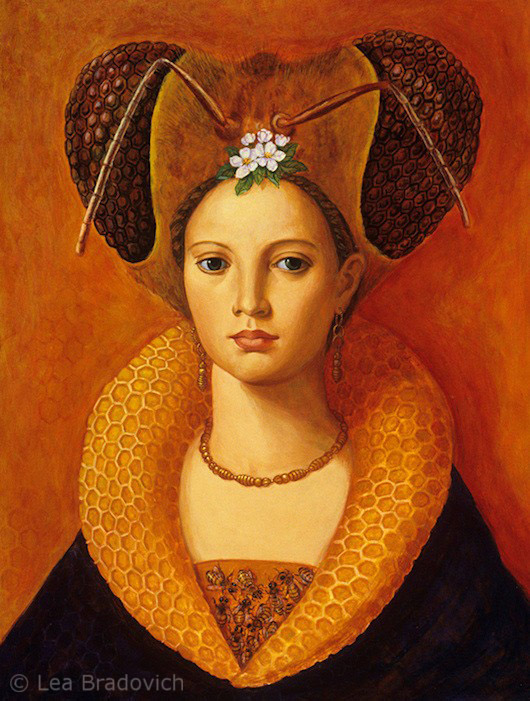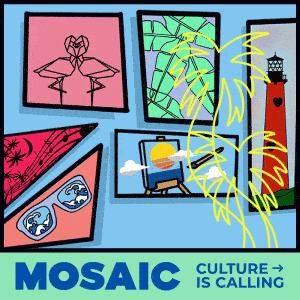Daughter of the Hive
Ever since she was a small child, Lea Bradovich was fascinated with storybooks and the tiny creatures inhabiting her backyard. She witnessed caterpillars sprout fairy-like wings, taking flight off to mysterious lands. Colorful birds would swoop down for brief encounters only to reappear the following spring. Today, the Santa Fe artist continues to draw on those early memories. Her massive body of work, mainly portrait paintings, features women depicted, for example, wearing headdresses made of monarch butterfly wings. Other paintings show two large queen honey bees atop a woman’s head, taking on the form of an extravagant hairstyle.
Bradovich, a thoughtful and imaginative creative, adeptly emulates her brush strokes like a Renaissance-era artist would, an artistic movement that she’s studied closely. Despite the rather seriousness of that antiquated time, her portraits integrate folkloric characteristics with a delicate touch of whimsy, pops of color, and a nature–meets-human society storytelling that joyfully permeates each piece. Queen bees and the pattern of a bee hive appear in her paintings as embellished details often times as as clothing, color palettes, and as the aforementioned headdresses. “I wanted to explore the metaphor of merging animals/insects with humans, like the ancient chimeras, but after a point it reminded me too much of GMO experiments. So I decided the nature elements would be hats, clothing, shoes, like mythopoetic headgear, metamorphic dresses,” she explains.
In her newer work, the queen bee serves as a steadfast inspiration. Yet, over these many years, her inclusion of bees and monarch butterflies was simply an organic choice. “It turns out the insects I like to depict are endangered,” she observed. “I love warm honey color tones and I like the way this tiny bug, the bees have this inherent hierarchy and nobility,” she says. “In a real hive, there’s a queen and princess bees who actually fight and sting one another – and the one who wins becomes the new queen. Their lives are completely epic, and we know so little about them. To me, they are like celebrities doing so many amazing things.”
And, some would argue that celebrities serve as royalty in American culture. “The idea of using the forms of old court paintings to depict insect royalty, like the Queen Bees, still engages me, and makes a comment that royalty (true nobility) is quite common and very nearby, in the backyard, for instance.”
And when it comes to art, Bradovich isn’t scared to go against the grain. Some of her portaits have three eyes; A weird, offbeat detail. “Insects have
compound eyes, and doubling up the eyes is a way of referencing that. It also refers to growth patterns in humans, when we are young our eyes are lower in our heads, with a large expanse of skull (as the brain is growing quickly), as we become adults the eyes appear higher in the face as the rest of the features catch up. If you block out a set of eyes you can see the young/older faces. So it’s a bit of time lapse and a nod to compound eyes.”
“All of my bee paintings merge honey (nectar to the ancients), bees and flowers, (in Daughter of the Hive’s case apple blossoms.) The painting takes place within a honeycombed hive in an amber light. The bees were considered holy messengers in many cultures, bridging the divine and mundane worlds. The buzzing of the bees was considered the sound of the Goddess. Daughter has a honeycomb halo, referring to the bees holy function. If the whole is holy, the bees make our world whole, without them we would have no flowering plants. In this sense we are all sons and daughters of the hive. The smaller scale world of the bees and other insects is happening in our backyards where great adventures and epic migrations begin and end. A simple safari is to wander around the plants and soil and simply open our eyes!”
Influences: Contemporary magical realist painting, Early Renaissance painters like Botticelli, Mannerists like Bronzino and Parmigianino, The Flemish Primitives and Frida Khalo.
Visit: leabradovich.com
~Andrea Richard














